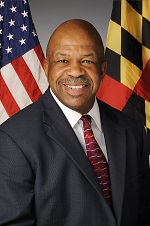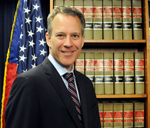 |
| Maryland Rep. Elijah Cummings |
Amphastar ($AMPH) is in hot water with U.S. officials again. After New York and other states put the squeeze on the company to drop the price of its overdose drug, naloxone, Rep. Elijah Cummings of Maryland is urging his state's governor to do the same.
The state is being overcharged for naloxone, which is used by EMTs and other providers to reverse heroin and opioid overdoses, Cummings wrote in a Tuesday letter. Its price in Maryland more than doubled from June 2014 to January 2015, to $41 per dose from $19, Cummings said, and price hikes are interfering with plans to train people in naloxone use and distribute the med.
"Maryland should not let Amphastar jeopardize the positive steps the state has already taken by overcharging for this critical drug," the letter states. "I encourage you to take the same aggressive action as other states to negotiate an agreement … and then use the savings to make naloxone more widely available."
 |
| New York Attorney General Eric Schneiderman |
Cummings' letter comes after a tripling in overdose deaths from 2010 to 2013 in Maryland, and similar problems elsewhere amid the epidemic of opioid abuse. And it follows a full-court press by some states to get Amphastar to back off its aggressive pricing. New York Attorney General Eric Schneiderman sued Amphastar over those price hikes, and the company in February agreed to issue $6-per-dose rebates. Under the deal, rebates will rise along with the drug's list price, so that price hikes will essentially be negated.
Vermont Gov. Peter Shumlin started pressing Amphastar in April after naloxone's price rose by 62% over the course of one month; the state has been stocking police cars and ambulances with the overdose remedy. Ohio asked in February for the same $6-per-dose rebate New York negotiated. AG Mike DeWine said at the time that naloxone's price had risen to $28.50 in October, from as low as $12.78 in 2013. Ohio agencies administered more than 10,500 doses in 2012, DeWine said.
Amphastar has defended its pricing, saying that its naloxone injectable costs the least among similar products available in the U.S. Naloxone in vial form costs $37.23 per milligram on average, CFO Bill Peters said in February, or 226% of the per-milligram price of Amphastar's prefilled syringe.
"With all of this in mind, I am confident that we can assist Ohio in a similar way that we did with New York as we are committed to public safety," Peters said.
Amphastar's pricing battle is among several high-profile fights over rising drug prices. For instance, Questcor stirred up controversy when it hiked the price on its H.P. Acthar Gel, approved to treat 19 inflammatory conditions, to $23,000 in 2007--and then northward of $41,000 in 2012. Mallinckrodt ($MNK), which bought Questcor last year, is now under FTC investigation for potential antitrust violations related to the drug.
Jazz Pharmaceuticals ($JAZZ) has drawn fire for increasing the price on its narcolepsy drug, Xyrem, which went up eightfold from 2007 to 2013. Rising prices on diabetes meds--including Sanofi's ($SNY) Lantus, Eli Lilly's ($LLY) Humulin and Novo Nordisk's ($NVO) Levemir--have also made headlines. And The Wall Street Journal recently called out companies that have bought in products and immediately raised prices by five- or six-fold.
- read the letter from Rep. Cummings
Special Report: 10 big brands keep pumping out big bucks, with a little help from price hikes